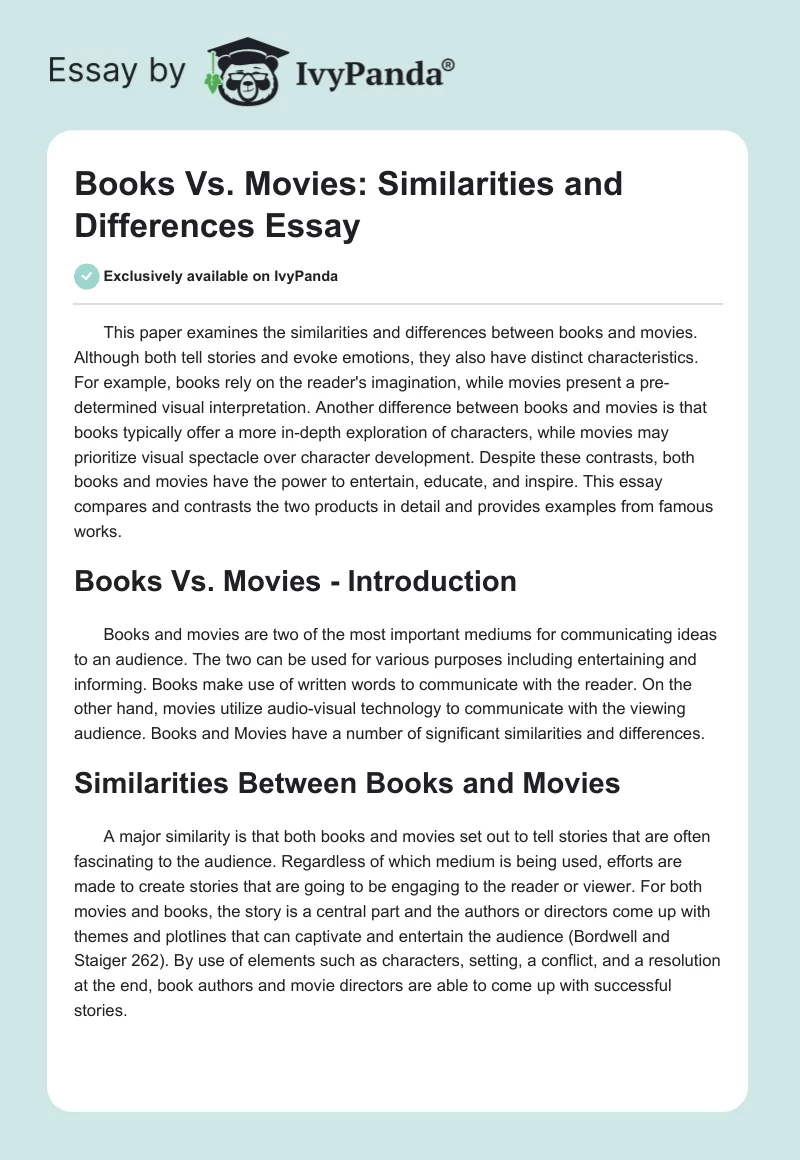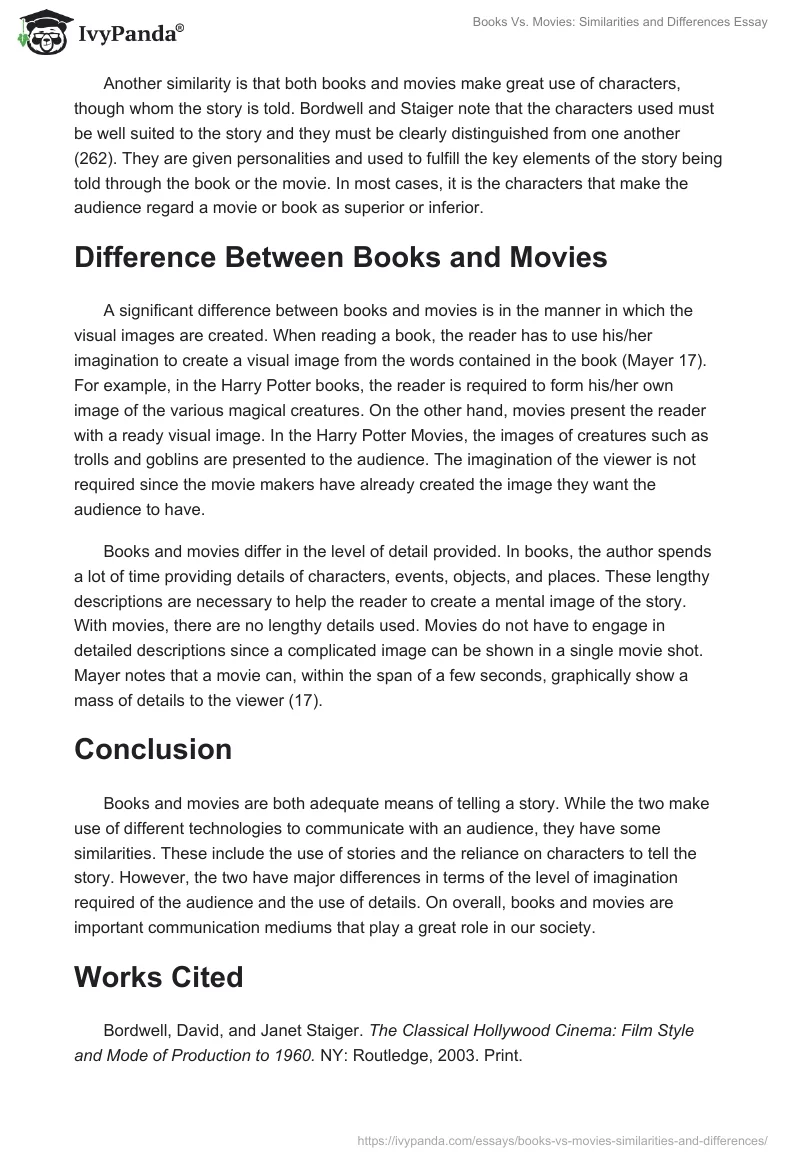This paper examines the similarities and differences between books and movies. Although both tell stories and evoke emotions, they also have distinct characteristics. For example, books rely on the reader’s imagination, while movies present a pre-determined visual interpretation. Another difference between books and movies is that books typically offer a more in-depth exploration of characters, while movies may prioritize visual spectacle over character development. Despite these contrasts, both books and movies have the power to entertain, educate, and inspire. This essay compares and contrasts the two products in detail and provides examples from famous works.
Books Vs. Movies – Introduction
Books and movies are two of the most important mediums for communicating ideas to an audience. The two can be used for various purposes, including entertaining and informing. Books make use of written words to communicate with the reader. On the other hand, movies utilize audio-visual technology to communicate with the viewing audience. Books and Movies have several significant similarities and differences.
Similarities Between Books and Movies
A major similarity is that both books and movies set out to tell stories that are often fascinating to the audience. Regardless of which medium is being used, efforts are made to create stories that are going to be engaging to the reader or viewer. For both movies and books, the story is a central part, and the authors or directors come up with themes and plotlines that can captivate and entertain the audience (Bordwell and Staiger 262). By using elements such as characters, setting, conflict, and resolution at the end, book authors and movie directors can come up with successful stories.
Another similarity is that both books and movies make great use of characters through whom the story is told. Bordwell and Staiger note that the characters used must be well suited to the story, and they must be clearly distinguished from one another (262). They are given personalities and used to fulfill the key elements of the story being told through the book or the movie. In most cases, it is the characters that make the audience regard a movie or book as superior or inferior.
Difference Between Books and Movies
A significant difference between books and movies is in the manner in which the visual images are created. When reading a book, the reader has to use his/her imagination to create a visual image from the words contained in the book (Mayer 17). For example, in the Harry Potter books, the reader is required to form his/her own image of the various magical creatures. On the other hand, movies present the reader with a ready visual image. In the Harry Potter Movies, the images of creatures such as trolls and goblins are presented to the audience. The imagination of the viewer is not required since the movie makers have already created the image they want the audience to have.
Books and movies differ in the level of detail provided. In books, the author spends a lot of time providing details of characters, events, objects, and places. These lengthy descriptions are necessary to help the reader to create a mental image of the story. With movies, there are no lengthy details used. Movies do not have to engage in detailed descriptions since a complicated image can be shown in a single movie shot. Mayer notes that a movie can, within the span of a few seconds, graphically show a mass of details to the viewer (17).
Conclusion
Books and movies are both adequate means of telling a story. While the two make use of different technologies to communicate with an audience, they have some similarities. These include the use of stories and the reliance on characters to tell the story. However, the two have major differences in terms of the level of imagination required of the audience and the use of details. Overall, books and movies are important communication mediums that play a great role in our society.
Works Cited
Bordwell, David, and Janet Staiger. The Classical Hollywood Cinema: Film Style and Mode of Production to 1960. NY: Routledge, 2003. Print.
Mayer, Robert. Eighteenth-Century Fiction on Screen. Cambridge: Cambridge University Press, 2002. Print.

